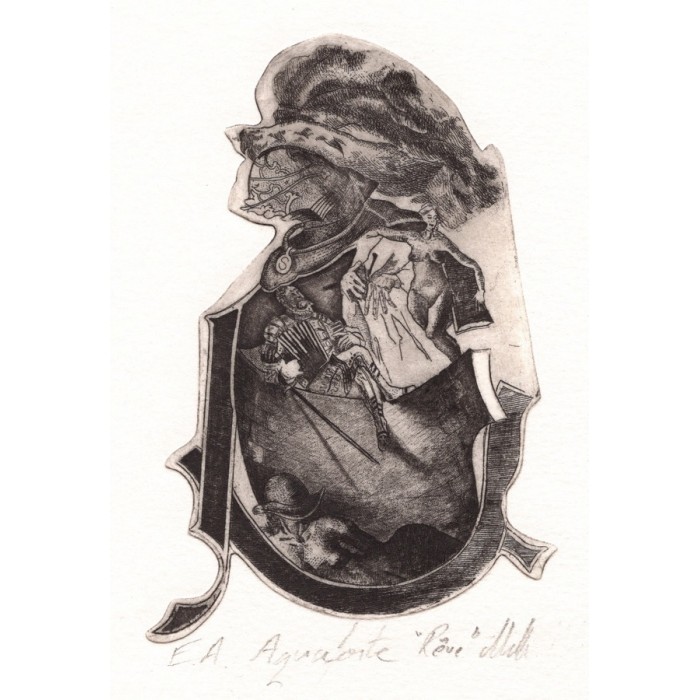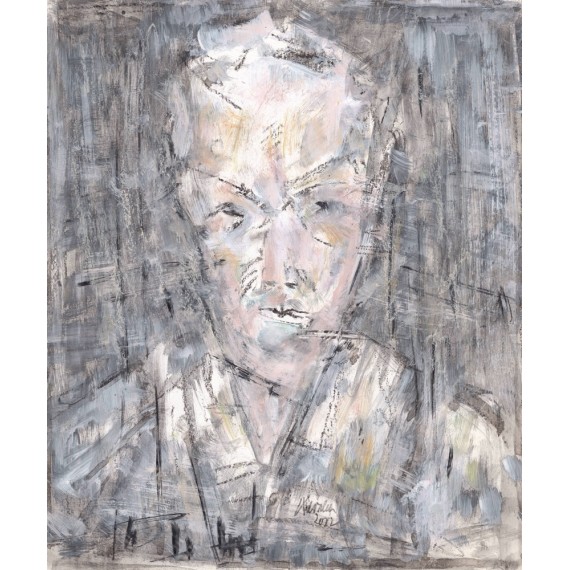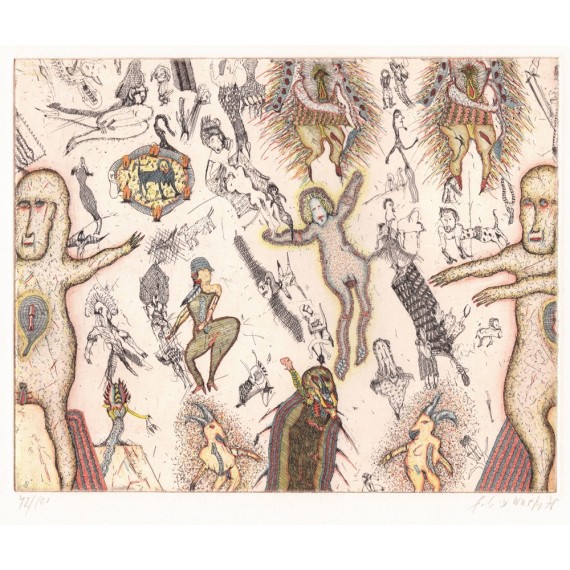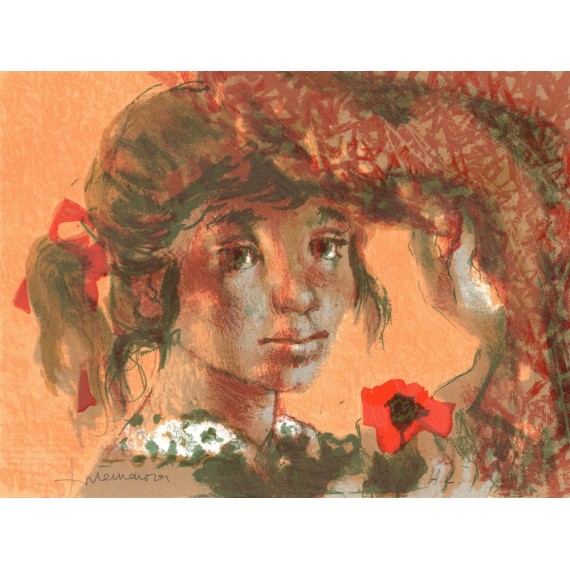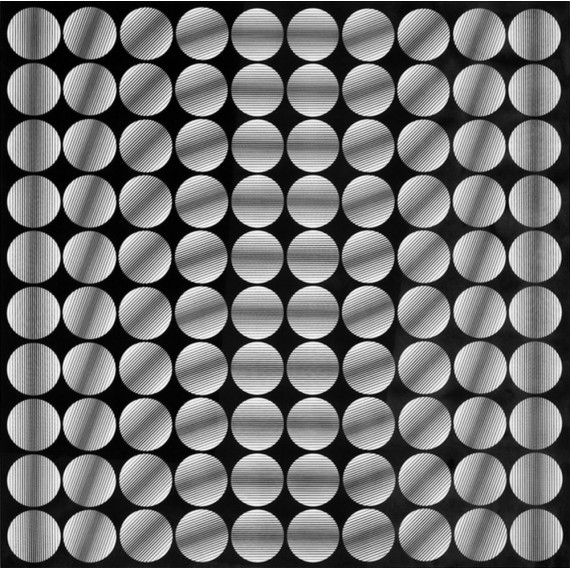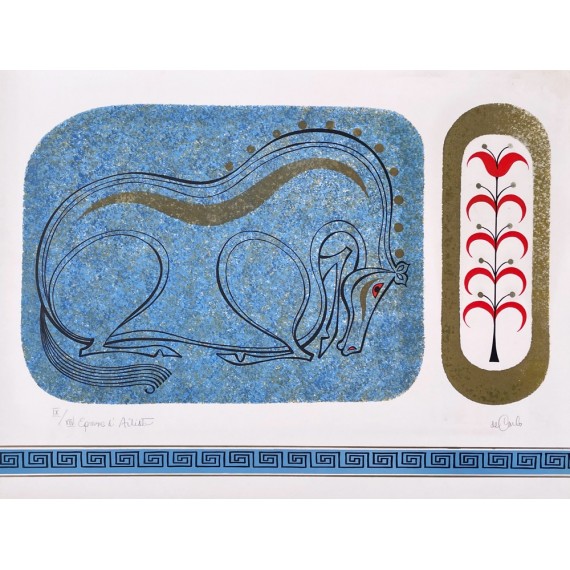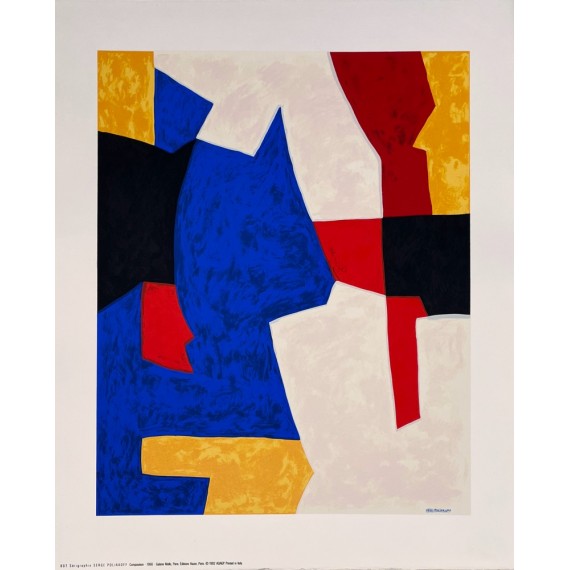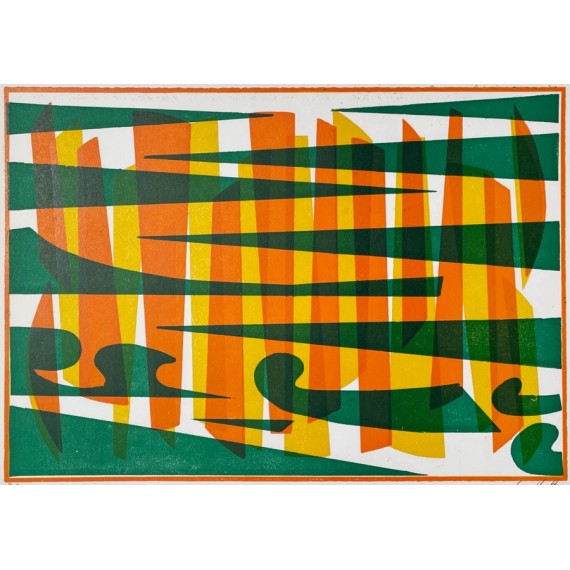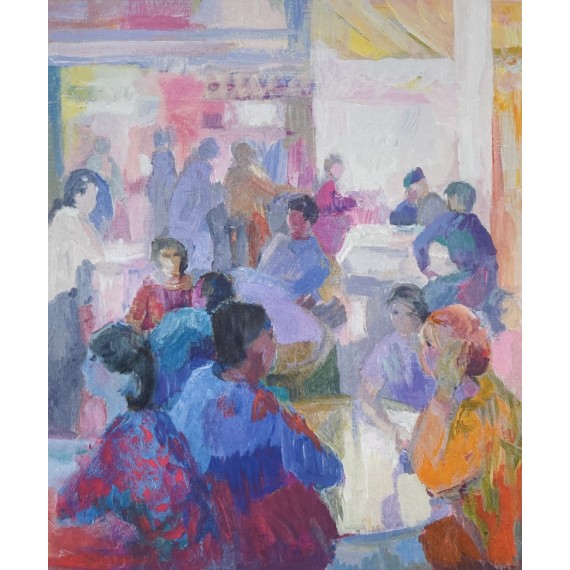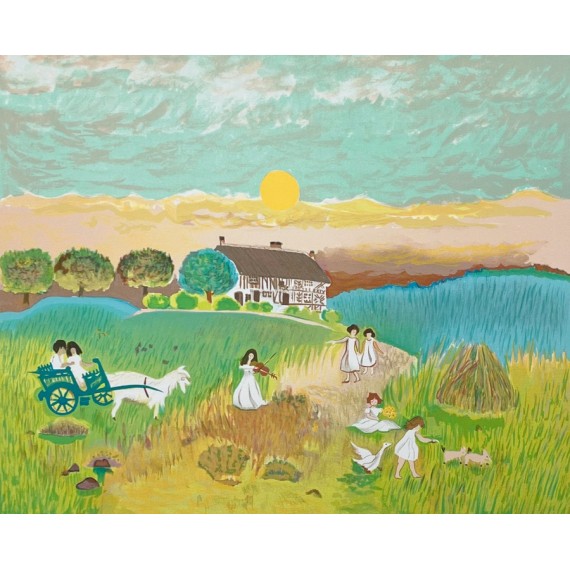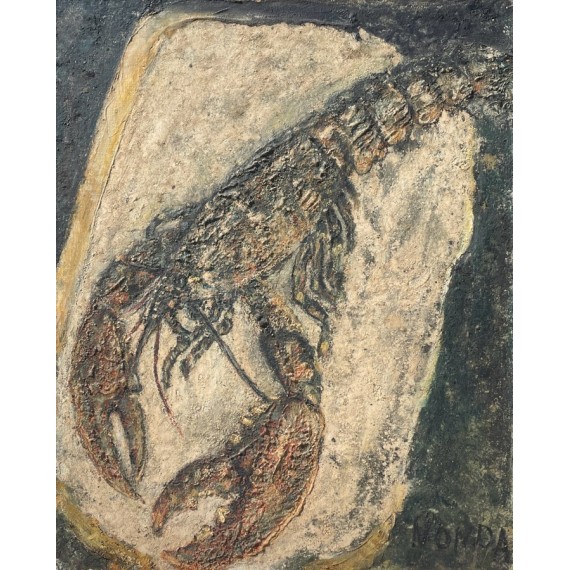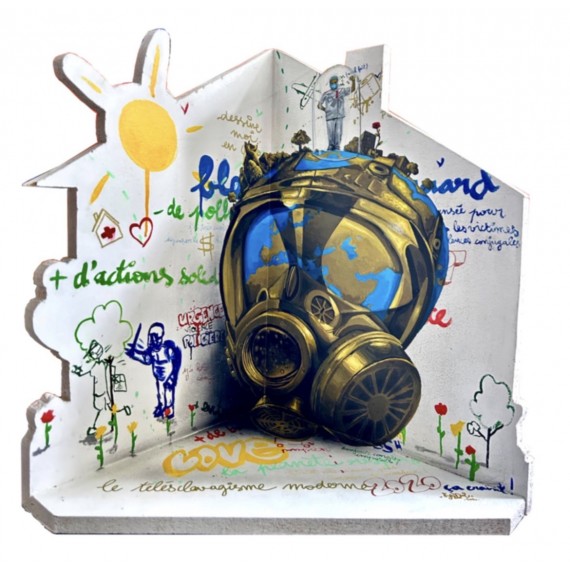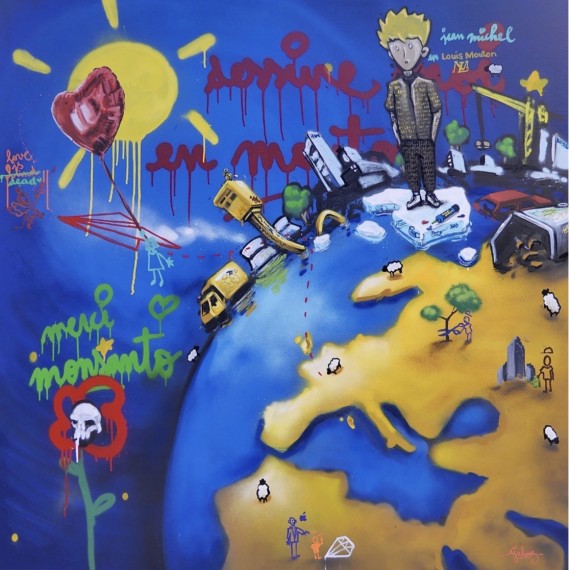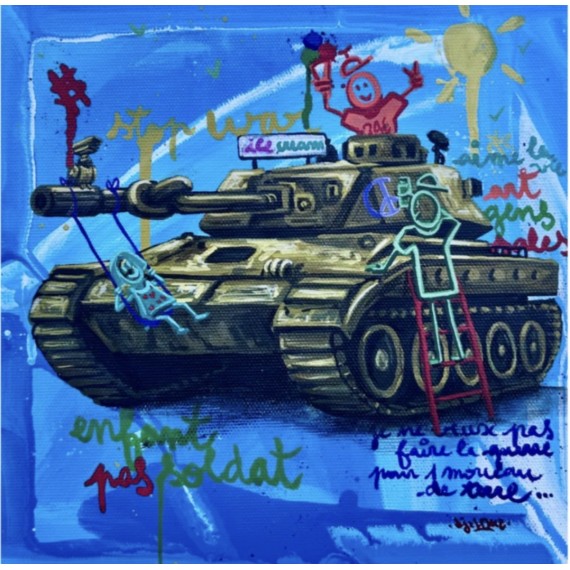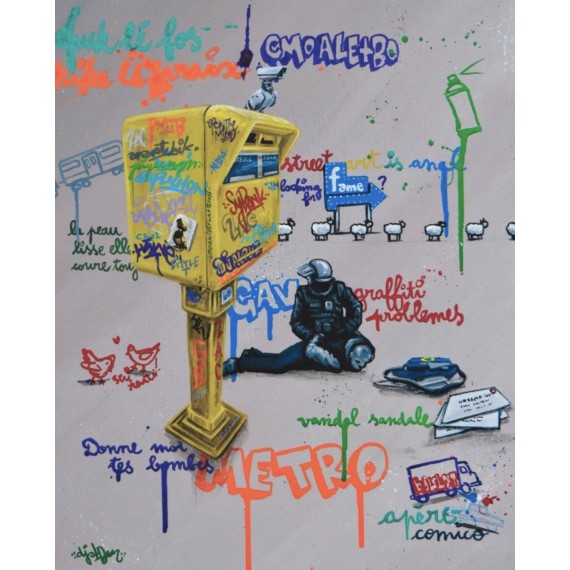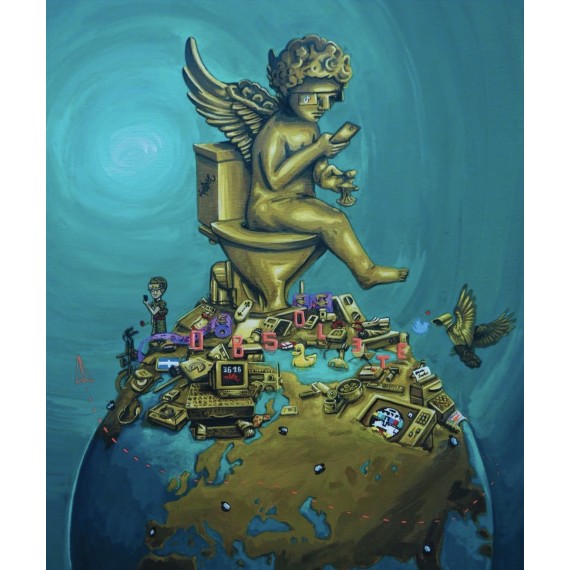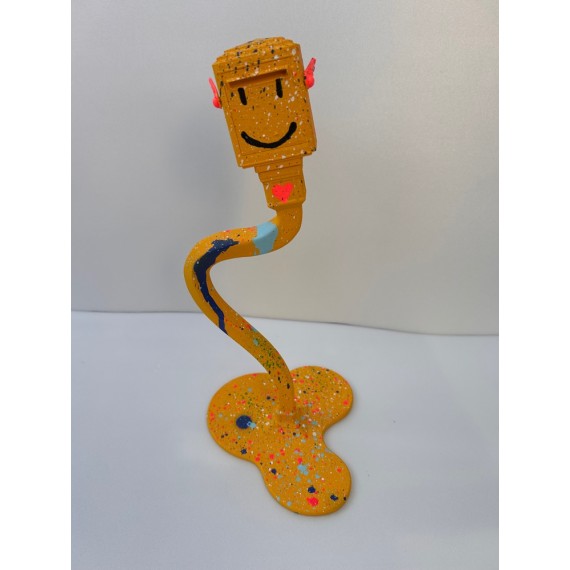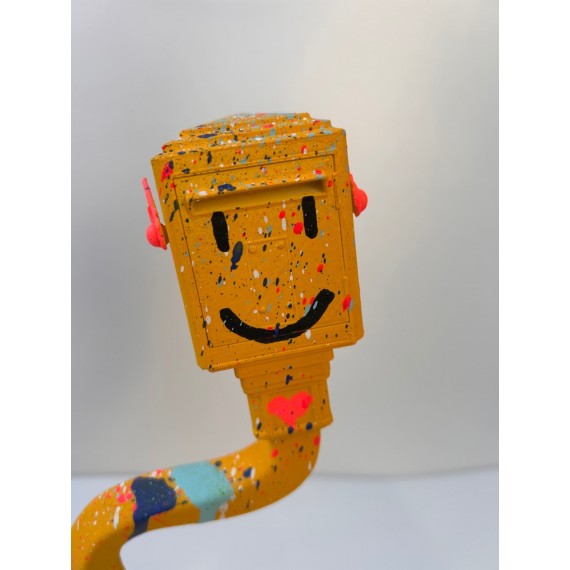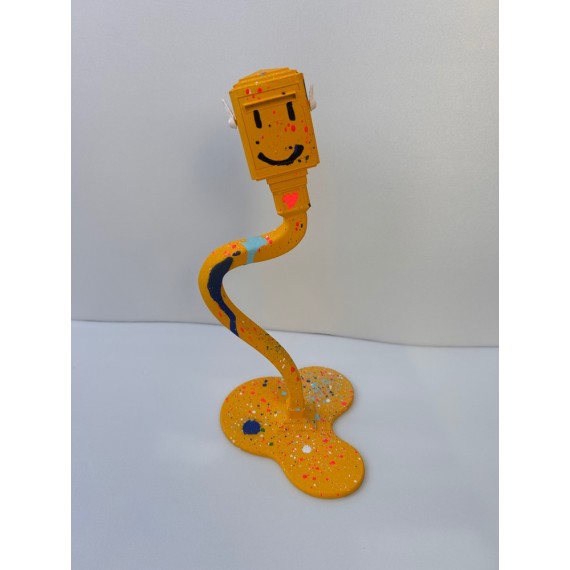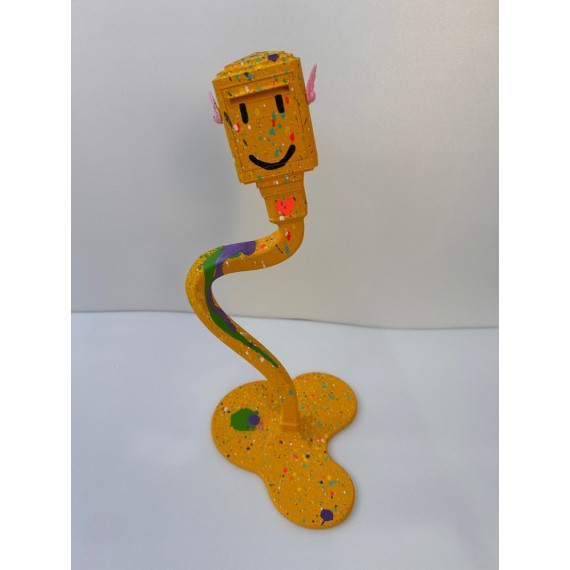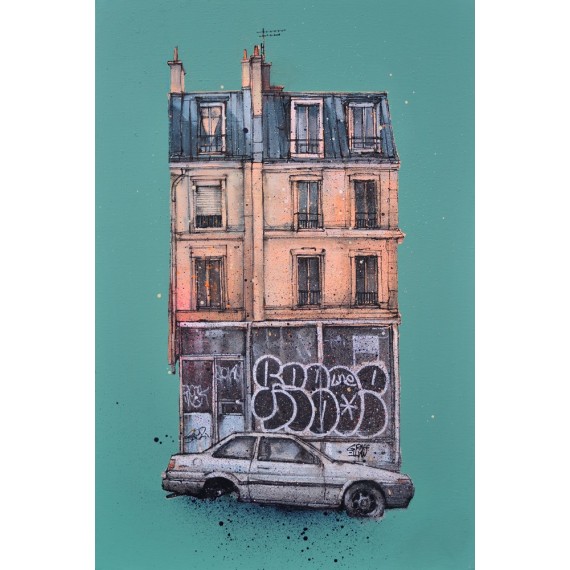"Dream"
Original etching.
-
Plate dimensions (excluding margins): 11 x 7.5 cm
-
Dimensions with margins: 17 x 14 cm
-
Signed in the lower right corner
-
Artist’s proof (EA)
-
Titled
This etched work, executed in aquatint, belongs to a dreamlike and symbolist tradition where the image transcends mere narrative to plunge the viewer into the depths of dream, memory, and the unconscious.
Composition and Technique
The frame, shaped like a Gothic initial—possibly a “J” or a stylized letter—serves as a setting for a series of superimposed scenes, layered like strata of consciousness.
Iconographic Reading
At the top of the image, a helmeted figure draped in a vast cloak of fur—perhaps a king or a knight—embodies a medieval archetype of power or a phantasmagoric warrior. The ornate detailing of the helmet and the inward-facing posture suggest introspection or a silent watch over the dream.
In the center, the main scene immediately draws the eye: a man dressed in Renaissance garb appears to be playing an instrument or holding an object (a book? a sword?), while a nearly nude female figure seems to emerge from a draped cloth held by a disproportionately large hand. This hand, possibly representing the dreamer or a higher entity, evokes the genesis of the dream itself—the creation of an unreal world, beyond logic.
At the lower left, a hatted figure, half-hidden in shadow, appears to be observing or sleeping, reinforcing a psychoanalytic reading of the image: all of this may be nothing more than the mental projection of a single mind—the dreamer.
Meaning and Interpretation
The title "Dream" is wholly fitting. This labyrinthine composition evokes a mental theater where disjointed scenes unfold, unified by their incongruity and archetypal resonance. The juxtaposition of historical, mythological, and erotic figures echoes the surrealists—particularly Max Ernst or Salvador Dalí—while preserving a classical technical lineage, reminiscent of master engravers like Rembrandt or Callot.
The dream, as in Freud’s conception, is not merely a nocturnal diversion but a symbolic domain—an arena where impulses, memories, and repressed desires are liberated. The work masterfully captures this elusive, unsettling, and captivating dimension.
Conclusion
This etching is a virtuoso exploration of the shadowy zones of the soul. Through its technical refinement, rich symbolic language, and enigmatic construction, it stands at the intersection of Renaissance art and modern imagination. A rare and dense piece.

